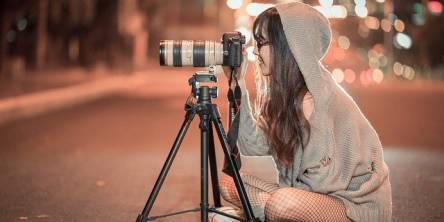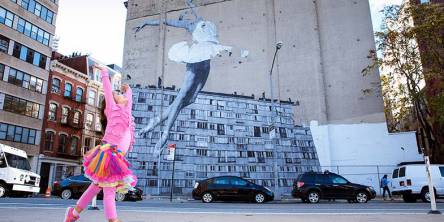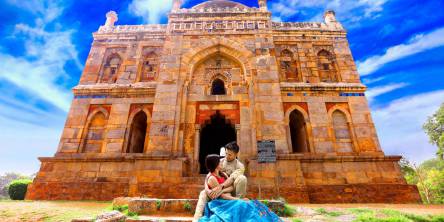Collecting Vintage Cameras: a Beginners Guide
Digital cameras were just better; you could take hundreds or thousands of photos at a time, and those photos could be quickly and easily shared and stored.
In recent years, however, digital cameras have lost some of their novelty and allure. They’re no longer the shiny new arrivals in the photography aisle, and photographers aren’t quite as enamored with them as they once were. They’re still the most popular choice for those who want a simple and easy way to preserve memories, but they’ve lost some of their lustre.
As it turns out, the introduction of the digital camera wasn’t quite the death knell to analogue that many predicted it would be. Analogue cameras weren’t lost to the pages of history, nor were they abandoned completely in favor of digital. In spite of the many apparent advantages of digital cameras, film cameras somehow managed to stick around.
The odd persistence of analogue
To anyone who hasn’t used one, the reasons why the analogue camera managed to stay relevant up to the present day might seem like a bit of a mystery. There are few practical advantages held by analogue over digital, and even these few advantages are highly situational and often replicable by digital cameras with little effort.
No, the reason for the persistence of analogue photography is not attributable to some hidden advantage or superiority of the hardware or storage medium. Instead, film cameras have persisted due in large part to one thing: the uniquely rewarding and gratifying experience of shooting on film. There’s simply nothing quite like taking photos with an analogue camera!
Once you dip your toes into the waters of analogue photography, chances are you’ll be taking a dip shortly after. The world of film photography is vast and full of unique new things to discover, providing you with endless hours of fascinating pastime activity. Once you start carrying a film camera around, you’ll rarely be found without it!
Cost of entry
One of the coolest things about analogue photography is the ease with which you can get into the hobby. For less than $100, you can buy a used analogue camera, a decent lens or two and a half a dozen rolls of film and get started on analogue photography. Compared to what you need in order to start shooting on digital, this is pocket change!
Now, this isn’t to say that analogue photography is cheap; far from it, actually! A roll of film can hold either 24 or 36 exposures, so you can count on spending quite a bit on film stock over the course of your hobby. The other expense you’re likely to encounter just happens to be the subject of today’s article. What is that subject, you ask? Collecting cameras, of course!
An analogue camera collection of your own
When you start shooting on film, starting a collection of analogue cameras is almost inevitable at some point. The allure of finding new and unique additions to your collection is undeniable, and it likely won’t be long before you’ve got a substantial number of rare or idiosyncratic pieces of film history in your personal possession.
Before you get out there and start looking for these cameras, however, you’re going to need to know a bit more about how to collect analogue cameras. In this article, we’ll be taking you over some basic do’s and don'ts of vintage film camera collection, so you know what to look for and where to look for it. Let’s begin!
Where to look
The first step towards finding new additions to your new burgeoning camera collection is knowing where to look. There are plenty of places where you’re likely to find rare or idiosyncratic cameras if you look hard enough, and even some where you might even get your hands on one of particularly great value.
For starters, you’ll want to check a number of places in your immediate vicinity. Flea markets, thrift stores, antique shops and a number of other places might have what you’re looking for, and they might also have it at an exceptionally low price. Old cameras are quite common if you know where to look, and they can be found cheaply a lot of the time.
If you’re looking for a specific make or model, you might have more success searching for it online. You may end up paying a bit more, but if you want a camera that’s rare or difficult to find, this might be your best bet. Additionally, most online used analogue camera vendors test their merchandise thoroughly prior to listing it, so you’re almost guaranteed a working camera.
What to look for
Now that you know where to look, you need to learn what to look for. Old cameras are dime a dozen, but working examples aren’t quite so common. In order to tell the difference between a working camera and a broken one, you’re going to need to look out for a few red flags and incorporate routine checks into your camera hunting technique.
First of all, always research any camera you find before purchasing it. A quick Google search will tell you how much it’s worth, what malfunctions it’s most susceptible to and whether or not it’s a good fit for your skill level and amount of experience. This will allow you to much more effectively weed out any overpriced, broken or difficult-to-use models.
Secondly, always keep a few of the most common camera batteries and a blank roll of film with you at all times when you’re out searching for cameras. This will allow you to test the camera to make sure that the shutter is firing, the light meter works, and any other electronic functions are in order. If you skip this step, you might arrive home only to find that you’ve purchased a dud!
Conclusion
Once you’ve got a couple analogue cameras, you’re going to realize just how much there is to this seemingly simple hobby. Finding different things to photograph, different lenses to use and different film stocks to try will probably keep you busy for a while; after that, you’ll realize how much you can do without changing any of these components!
There’s no doubt that analogue photography is something special. There’s no hobby that quite matches the sheer diversity and range of expression you can achieve with a simple analogue camera and some cheap film stock. As you get deeper into the world of film photography, chances are you’re only going to fall more deeply in love with the hobby. We wish you the best of luck in this new pursuit!
Similar Articles
For budding photographers, there’s a good amount of info out there. You can find out about apertures, lenses, and exposure times pretty easily
"No one is perfect on this globe; we all make mistakes at some point." This adage also applies to the photography profession, especially to new photographers. Some people are gifted with great photography skills, while some are not.
Not every picture you take might turn out the way you would expect it to. Thankfully there are many photo editing programs that can help you give some finishing touches and add artistic visions to your pictures.
It is a common question asked by photography clients; Where is the best place to get pictures taken? Should I choose an indoor studio location, an industrial park, or maybe a place full of trees? What are the most popular spots your clients choose to take photos?
Like every art, wedding photography has gone through some significant changes over the years. Candid wedding photography has become the new buzz in Indian weddings, to capture the unfiltered fun and frolic experienced during the special occasions.
A wedding is a miraculous event that celebrates love and the union of soulmates. Even though it is one of the most important days of any bride and groom's life, a wedding takes a lot of time and effort.
Wedding videography is an important part of any wedding. It creates priceless memories that will stay with you for the rest of your life. The price of a wedding videographer varies depending on their experience, equipment, and your wedding’s location. In the U.S. the average cost most couples spend is around $2,000.
A pre-wedding shoot, frequently alluded to as an engagement shoot, is a photo-shoot that more often than not happens three to a half year before the wedding day. Despite the fact that pre-wedding shoots have turned into a need for most, plenty of couples have begun debating on regardless of whether they ought to have one.
If you prefer to paint on the canvas with watercolor, oils or acrylic paint, you have possibly observed that the unframed painting gives a better view from the front but it looks not-so-appealing from the side. When you see those edges of the raw canvas, they look horrifically pale against the colorful front









